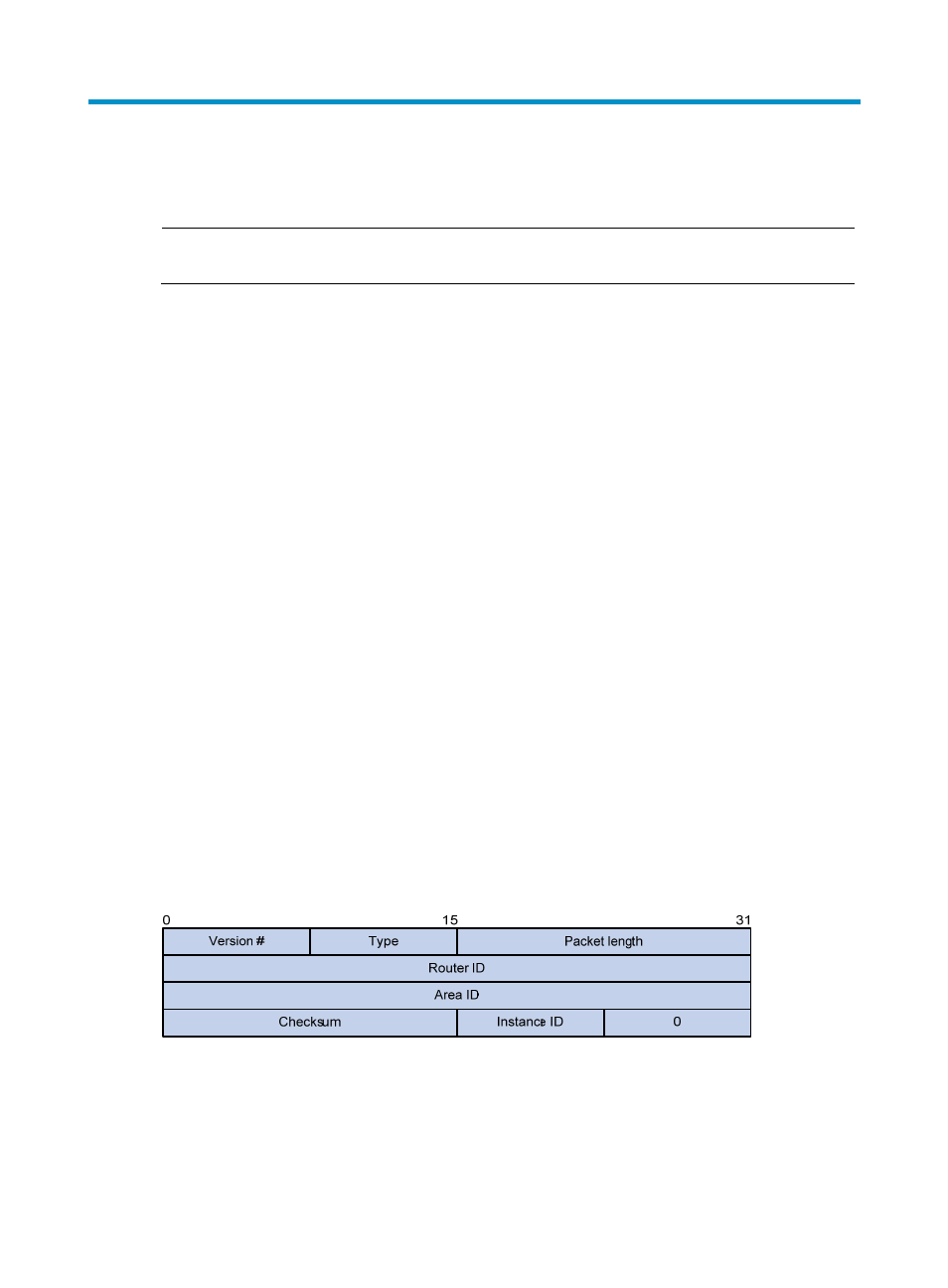Ospfv3 configuration, Introduction to ospfv3, Ospfv3 overview – H3C Technologies H3C S10500 Series Switches User Manual
Page 294: Ospfv3 packets

279
OSPFv3 configuration
NOTE:
The term
router in this document refers to both routers and Layer 3 switches.
Introduction to OSPFv3
OSPFv3 overview
Open Shortest Path First version 3 (OSPFv3) supports IPv6 and complies with RFC 2740 (OSPF for IPv6).
OSPFv3 and OSPFv2 have the following similarities:
•
32-bits router ID and area ID
•
Packets—Hello, DD (Data Description), LSR (Link State Request), LSU (Link State Update), and LSAck
(Link State Acknowledgment)
•
Mechanism for finding neighbors and establishing adjacencies
•
Mechanism for LSA flooding and aging
OSPFv3 and OSPFv2 have the following differences:
•
OSPFv3 runs on a per-link basis, and OSPFv2 runs on a per-IP-subnet basis.
•
OSPFv3 supports multiple instances per link, but OSPFv2 does not.
•
OSPFv3 identifies neighbors by Router ID, and OSPFv2 by IP address.
OSPFv3 packets
OSPFv3 has the following packet types: hello, DD, LSR, LSU, and LSAck. These packets have the same
packet header, which is different from the OSPFv2 packet header. The OSPFv3 packet header is only 16
bytes in length, has no authentication field, and is added with an Instance ID field to support
multi-instance per link.
Figure 105 OSPFv3 packet header
Major fields for OSPFv3 packets are as follows:
•
Version #—Version of OSPF, which is 3 for OSPFv3.
•
Type—Type of OSPF packet; types 1 to 5 are hello, DD, LSR, LSU, and LSAck respectively.
•
Packet length—Packet length in bytes, including header.